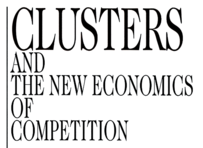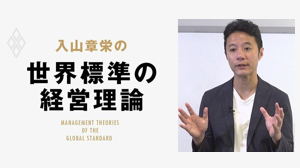
-
Xでシェア
-
Facebookでシェア
-
LINEでシェア
-
LinkedInでシェア
-
記事をクリップ
-
記事を印刷
The Problem with Corporate Values
The modern business environment is extremely disruptive and unpredictable, as is often reflected by the term VUCA (volatile, uncertain, complex, and ambiguous). In this dynamic and complex business environment, enduring corporate values are becoming increasingly important as an anchor for strategic action.
Corporate values are fundamental values that reflect a firm’s most important standards and principles. It is a firm's enduring social DNA that forms the foundation of the firm. Corporate values are intrinsic and are implemented throughout the organization using various means, expressed often in organizational decisions and actions.
For example, values-based management can help maintain organizational alignment while ensuring the requisite diversity (of experience, knowledge, and insight) necessary for the organization's members to respond flexibly to environmental changes.[1] Corporate values also serve as an essential enabler of agile decision-making. When employees share common values, they can redefine business areas flexibly and quickly reconfigure their products, services, and business models.[2]
Corporate values help sustain a firm’s competitive advantage and are an important tool that directly contributes to improved corporate performance. However, while many companies have defined corporate values, not all function well. In many cases, corporate values are merely used minimally to express to employees the expectations and desired day-to-day behavior sought by the company.
Why are so many firms failing to leverage their corporate values? The authors believe there are two main reasons.
The first reason is that firms often start discussing corporate values with only a vague understanding of the term, preventing them from properly identifying the firm’s true fundamental values. And even when firms succeed in identifying their fundamental values, many adopt expressions that do not necessarily reflect what is really important.
The second reason is that even if firms successfully express meaningful corporate values, they often fail to align them with the firm’s vision, business strategy, and organizational culture. This is a lack of commitment on the part of executives and means that corporate values cannot be leveraged in practice.
The authors of this paper, Masahiro Kotosaka and Jonathan Trevor, have helped companies transform themselves through consulting and executive training focused on corporate values. Masahiro Kotosaka, who is based at Keio University, explores business strategies of start-ups and large Japanese companies. Jonathan Trevor, who is based at Oxford University, explores organizational strategies of global companies.
This paper presents solutions to the two problems based on the authors’ research and practical experiences. First, the authors will dissect the subject and explain common terms used to express corporate values. Next, they will introduce a framework for defining and implementing a firm’s fundamental values to realize positive outcomes.
The authors believe that these practices are essential for Japanese companies to achieve renewed growth. Japanese companies have long demonstrated their competitiveness by building family-like communities through Japanese-style management characterized by lifetime employment, seniority-based promotion, and company-based unions. In this highly homogeneous environment based on frequent and unofficial communication over a long period of time, it is easy to form a shared understanding of corporate values. No special effort is necessary to validate and implement them.
However, with the advance of globalization and the requirement for openness for enhanced innovation, management based on the premise of a close family-like community is increasingly being challenged. The COVID-19 pandemic served as a decisive factor in ending the informal and close in-person conversations that used to take place around the ‘water cooler’, after-work get-togethers, and golf outings (for example). These informal gatherings are unlikely to return completely.
Now is the time for Japanese companies to redefine their corporate values in a structured way and steadily implement them in their organizations. Companies need to rediscover the hard and soft assets they have accumulated throughout their history, envision the future, and evolve to realize that future.
Understanding the Structure of Corporate Values
Corporate values are often expressed by combining a wide variety of terms such as “purpose,” “mission,” and “values.” However, understanding and usage of these terms vary from company to company. Figure 1 shows the terms and structures used to express corporate values by the 30 top companies by market capitalization listed on the Tokyo Stock Exchange prime market. Each company employs various terms and structures, indicating that corporate values are not expressed uniformly across companies (Figure 1: Examples of Terms and Structures Used to Express Corporate Values).
For example, “values” is the most frequently used term, used by 12 out of the 30 companies; however, more than half of the companies (18) do not use that term. Furthermore, a three-tiered structure composed of “mission,” “values,” and “vision” is commonly held as the basic structure for expressing corporate values. Still, only Hitachi, Ltd. and Chugai Pharmaceutical Co., Ltd. adopt this structure. Some companies, such as Nidec Corporation, use a five-tiered structure, while others, such as Shin-Etsu Chemical Co., Ltd., use a single-tier structure.
The terminology and structure used to define a company's corporate values should reflect the unique character of that company. Blindly choosing corporate values will not produce desired results. For companies seeking to define their fundamental values in an accurate and easy-to-communicate way, the starting point must be to develop a deep understanding of what corporate values are.
Understanding three points in the following order will lead to a structural understanding of corporate values. The three points are, in turn: the components of corporate values, the process for implementing corporate values within an organization, and external values that influence corporate values (Figure 2: Understanding the Structure of Corporate Values).
The Two Components of Corporate Values
What are corporate values? Corporate values are composed of two elements, a company’s ultimate aim and the mindset of the company and its employees. This paper describes these two components using a basic structure in which the former is expressed as “purpose” and the latter as “values.”
A Company’s Ultimate Purpose
For a company that provides value to society through its business, growth in sales and profits is a means to that end (or a measure of success) and not an end in itself. In recent years, such goals have often been expressed as “purpose.” The definition of “purpose” can vary, but Jim Collins, world-renowned management author and author of the "Visionary Companies" series, succinctly described purpose as the “idealistic motivation for performing the company's work.”[3] In other words, it is an “intrinsic answer to the following questions: Why do we exist as a firm, what do we do, and why does it matter?[4] The authors agree with this definition of “purpose.” “Purpose” is an ideal state that a company aims to achieve eventually and remains in place as long as the company exists.
A company’s “purpose” is often expressed interchangeably with its “mission.” Both are formed and maintained by a company’s leadership and express its ultimate raison d’etre. It is the reason why diverse human resources come together and collaborate within an organization; it is the anchor for the company’s fundamental values.
Although no definition clearly explains the difference between the two, "purpose" generally defines the role a company aims to play in society and the value it wants to provide, often setting forth a lofty ideal that is pursued as long as the company exists. On the other hand, "mission" defines the company's role and value in society in a more action-oriented way, and tends to express an ideal that is extremely difficult but not impossible to achieve.
The Mindset of the Company and its Employees
Another component of corporate values is a “road map” of how a company plans to reach its ideal future state. In other words, it is the “mindset” for reaching the ideal future state indicated by the company’s “purpose” and “mission and is often expressed as a company’s “values.”
Companies that provide value to society through their businesses pay attention to the by-products of their activities. A company’s environmental, social, and corporate governance initiatives and its relationships with investors, suppliers, customers, and employees are based on its fundamental values. Companies strive to reach their ideal future state with these values in mind.
For example, many companies include “respect” in their list of values. Indeed, “respect” is a fundamental pillar in social relations. However, this does not mean that a company exists to be respected; rather, companies embrace respect as a working value to perform their purpose well.
Values are like a constitution, a standard of judgment that governs the company's and its employees' actions. A company not only upholds its ideal “purpose” and “mission” but also expresses through its “values” how that purpose and mission should be achieved.
Values can be considered as promises companies enter into with their stakeholders, and while “values” can be changed, they should not be deviated from unless there is a good reason for it.
How to Implement Corporate Values within an Organization
To realize management centered around corporate values, an organization’s priorities must be specifically defined and concretely translated into action. Medium- to long-term management goals and strategies should be aligned to corporate values. In other words, these companies do not select goals and strategies that contradict their fundamental values, even if those strategies could lead to profit or competitive advantage.
Some believe that a company’s medium- to long-term goals are in fact their own components of corporate value. However, the main focus of corporate values should be the firm’s ideal future state and the mindset needed to get there; the goals should follow the focus. The authors believe that medium- to long-term goals should not be viewed as corporate values themselves but as a means of implementing the values within the organization.
A company's medium- to long-term goals are often expressed as its “vision.” While purpose and mission are a firm’s ideal future state (the “what”), the vision is the means (the “how”) for getting there. In addition, while “purpose,” “mission,” and “values” are enduring guiding principles, “vision” changes over time. The same is true of business strategy and organizational culture in that they are not permanent.[5]
“Vision” plays a role similar to business strategy. They are both means of achieving a company’s purpose and mission. The difference between the two is that business strategy is a more specific selection of goals, plans, and priorities when compared to vision.
When formulating a business strategy, companies choose from various options including markets, products, and customers. In doing so, a company should never make choices that do not align with its corporate values, no matter how attractive the choice may be. This is because business strategy is only a means for realizing a company’s corporate values.
Organizational culture can be viewed as the result of decisions and actions by the company and its employees, or in other words, the realization of the company’s values. For a company aiming to realize its purpose and mission, the ideal organizational culture is one in which its employees live its corporate values. In reality, however, a company's organizational culture is often far from what is desired ideally, sometimes even hindering progress toward a company’s ultimate ideal state.
Terrence Deal and Allan Kennedy, in their 1982 book that greatly influenced subsequent research on organizational culture, stated that organizational culture is “The way we do things around here.”[6] In other words, organizational culture is how employees behave and make decisions that influence their actions.
Also, renowned management author Peter Drucker once said, “Don't Change Corporate Culture - Use it!”[7] In response to the fad of transforming organizational culture, Drucker, referring to examples from Japan and Germany, argued that it is difficult to artificially create organizational culture, instead suggesting ways to utilize organizational culture rather than change it. Citing Japan's Meiji Restoration as an example, Drucker explained that it is possible to instill new values and behaviors while building on existing culture. He argued that whatever type of organizational culture exists, one should find a way to leverage that culture to implement the company’s business strategy.
Organizational culture can be both a constraint and an effective means of reaching a company’s ideal future state. What is important to note is that organizational culture can be consciously managed. If management takes the initiative to role model the mindset and behavior that the company and its employees should practice, the organizational culture will catch up and manifest itself in desirable employee behavior and performance.
External Values that Influence Corporate Values and Their Means of Implementation
Various new values have been presented to the world, such as CSR (Corporate Social Responsibility), CSV (Creating Shared Value), and more recently, ESG (Environment, Social, and Governance) and SDGs (Sustainable Development Goals). These are externally generated values born from a social awareness of the issues facing society. The rise of these values shows that companies are expected to play a central role in solving these issues; these roles are enacted by companies in the form of corporate codes of ethics and ideal forms of organizational culture. Corporate governance laws and regulations may even be established for stronger control of corporate activities.
Many companies have adopted external values in their management style to meet society's expectations. It should be noted, however, that all of these pressures are externally generated. Corporate values are the company’s social DNA and are formed internally. While external values may influence how corporate values are expressed and how they are implemented in the organization, they should not be confused with the company's fundamental ‘internal’ values.
Another point to note is that even external values, which may seem uncontroversial, are neither fixed nor “correct.” Therefore, firms should not easily adopt external values as their own, even if they seem close to their corporate values.
Consider, for example, the difference between shareholder capitalism and stakeholder capitalism. A simple explanation of shareholder capitalism is that a company's raison d'etre is to make a profit for the shareholders, and all other activities are incidental. On the other hand, stakeholder capitalism asserts that a company’s raison d'etre is not only to make a monetary profit but also to make multidimensional contributions to its diverse stakeholders. Various debates rage regarding which mode of capitalism is best, but no definitive conclusion has been reached.
Countless external values have been created and have fallen out of use. While external values may be incorporated into business strategies from a strategic viewpoint, they should not be confused as components of corporate values, nor should corporate values be attempted to approximate external values.
To define corporate values, a company must determine its ideal future state — its ideal state — and its mindset for reaching that ideal future state. Then, to implement its corporate values within the organization, companies must develop medium- to long-term goals and business strategies and foster an organizational culture that contributes to realizing those strategies. Understanding this basic framework is essential when defining corporate values.
There is no correct answer regarding which terminology should be used to express corporate values or what kind of structure should be adopted. A company should give priority to its own will. Some companies do not express their values in words but communicate them through products that symbolize their fundamental values. The authors would like to emphasize that while understanding the basics is important, there is no need to get bogged down by them.
A Three-Step Process of Defining and Implementing Corporate Values
Once corporate values are defined, and the appropriate means for implementing them within the organization are chosen, the entire organization can move toward realizing its fundamental values. The authors call this a state of high "corporate value alignment" (alignment of a company's activities with its fundamental values).
Increasingly, managers are expected to grasp and strategically coordinate a complex set of business elements to establish a state of high “strategic alignment.”[8] Corporate value alignment is a prerequisite for enhancing strategic alignment; without the former, the latter cannot be realized.
Enhancing corporate value alignment is not easy and requires the painstaking execution of three steps: (1) ideation, (2) codification, and (3) co-creation. This paper defines this framework as the “Corporate Value Alignment Framework” and outlines each step in the following sections (Figure 3).
Note that discussions from this point forward are primarily focused on traditional companies. For start-ups, see “Column: How Start-ups Can Leverage Corporate Values.”
Ideation: Visualize the Company’s Ideals by Deeply Understanding and Reinterpreting the Company
Ideation is a process in which the leaders responsible for current and future management define and form a consensus around the company’s corporate values and shape them to be clearly understood by company employees. The basic goal is to create explanatory materials using terms such as “purpose,” “mission,” and “values” to promote understanding of the values amongst employees.
To complete the ideation process, current and future leaders must undertake the following three steps.
Collect materials from the past and future
First, to gain a deeper understanding of one’s company, leaders should delve into what the company has accomplished in the past and what it can do differently in the future. This process aims to rediscover hidden assets and reflect on the current state through dialogue with “colleagues” who have spent their valuable time working for the company. Leaders must collect materials that can be used to define corporate values and form the basis for discussing how things should be in the future.
Past history often contains assets that can be leveraged in the future. It can also serve as a bedrock for the self-esteem of company employees. For example, by focusing on symbolic events such as the company's first product, how it entered overseas business, and how it overcame a business crisis, leaders can reaffirm who their customers are and the company’s strengths. If the company has been in business for a long time, it can be a good idea to ask the senior leaders and employees who have embodied the company's history for anecdotes.
It is important to look back at the past and consider what can be done for the future. To this end, it is useful to discuss the future business environment with current and emerging young leaders in the field and to engage in dialogues with researchers and experts. It is also essential to discuss roadmaps for technologies with high potential for practical application with the R&D department and work with the finance department to identify future equity options. Scenario analyses can also be effective.
Interpret collected materials using maximum cognitive diversity
Second, current and future leaders add their interpretations and synthesize findings using the material collected. In doing so, it is effective to establish multiple cross-functional working teams comprised of current and future leaders from diverse backgrounds.
For example, the Development Bank of Japan (DBJ), through a customized education program designed exclusively for future executives, provides an opportunity for future leaders to gather material on the bank's past and future, which they then synthesize and use to engage with current executives to discuss the bank’s ideal future state and the mindset needed to get there. Such activities help future leaders gain a better understanding of the challenges facing current leaders and, at the same time, help current leaders understand the future envisioned by future leaders.
In the case of Mizuho Financial Group, the Corporate Planning Department served as the secretariat in establishing a working team led by current leaders and a working group comprising young middle managers expected to lead the next generation. Both parties worked independently and exchanged ideas to redefine the company's corporate values from current and future perspectives. Through discussions involving current and future leaders, Mizuho unlocked corporate value rooted in the future.
The leader of each working team is required to exercise “inclusive leadership”, which can be defined as the ability to integrate multiple inputs and diverse perspectives to build consensus.[9] In addition to being conscious of eliminating implicit biases, the leaders must proactively seek to harness the “collective wisdom of the crowd” and reflect it in the company’s corporate values.
Bringing diverse opinions together and working to integrate them is a difficult intellectual challenge. It may be more efficient for the current management team to make decisions independently. However, involving diverse constituencies in the discussion helps avoid the risk of groupthink; in other words, it avoids the risk of poor decision-making. It also increases employees’ sense of participation in the company’s corporate values, leading to a state where employees see corporate values as their own.
Current and future leaders define corporate values and create a narrative
Finally, current and future leaders define their company’s corporate values. Corporate values are ultimately subjective; there is no objective correctness to them. Therefore, the final decision needs to be made collaboratively by current and future leaders.
Once the corporate values are defined, they must be put into a narrative. “Narrative” refers to any method of communicating a message to a third party. It is best to choose a method unique to the organization that most effectively reaches the company’s employees, such as contrasting the company's present and future and showcasing specific examples.
The form of expression varies by company: some companies use narrative and slide formats, others use animated films and cartoons, and others may not even use words, instead choosing to express themselves through a symbolic product. Whatever method of expression is used must convey the company’s fundamental values to its employees.
It is tempting for executives to emulate examples of other companies, often called “best practices.” While there are some situations where this may be appropriate, best practices are generic and, therefore, difficult to apply to context-specific situations. Current and future leaders need to make their own decisions and not be bound by what is considered “best practice” as applying best practices to their companies can create misalignment and may even hinder performance and growth.
Codification: Implementing Corporate Values Comprehensively within the Organization
Codification is the process of implementing the corporate values defined in the ideation process within the organization, incorporating them into customer and employee experiences, and linking them to a management system that provides such experiences. Only when this is achieved will corporate values demonstrate their true value.
In reality, many companies become satisfied with just the ideation process and neglect the codification process. However, even if a company succeeds in adequately expressing its corporate values and presenting an optimal narrative to communicate them to the employees, those corporate values cannot fully function unless they are embodied in the experiences that the company provides and unless there is a mechanism put in place to create those experiences.
Codification consists of two steps. The first is to develop a vision of what each department's customer experience, employee experience, and operational guidelines should look like, and the second is to develop an action plan to realize that vision.
Defining the ideal customer and employee experiences and the operational guidelines needed for each department to realize those experiences is the equivalent of defining medium- to long-term goals and management strategies based on the company’s corporate values. In the same way, developing an action plan is almost synonymous with developing a short-term management strategy or an annual or quarterly business plan.
Envision the ideal customer experience, employee experience and operational guidelines for each department
While corporate values affect all stakeholders, they are especially significant for customers and employees. Therefore, it is important to envision the ideal customer and employee experience and gradually renew the operating guidelines of each department to make those experiences a reality.
First, redefine the ideal customer experience. The renewal of customer experience should be initiated as a priority as it is a goal to be achieved over the medium- to long-term and requires time and money. What kind of customer experience should the company provide to embody its corporate values through its products and services?
For example, companies such as Tesla, Apple, Dyson, and Adobe have developed their businesses in a way that aligns closely with their values; this is reflected not only in their products, but also in their pricing structure, product packaging, and even the services associated with the products, allowing customers to experience those values first hand. Let's take Tesla as an example.
Tesla delivers unbeatable customer experiences by building its advantages on tangible performance metrics such as a fully remote sales and support system, top speed, acceleration performance, cruising range, innovative infotainment, and cutting-edge interior and exterior designs. At the same time, the company has been calling its driver assistance technology, which is hardly outstanding in performance, “fully automated driving”. It has been lowering the priority of improvements in areas that are difficult for customers to see, such as stable battery performance and overall vehicle build quality. This is a deliberate choice to realize the company's mission to “accelerate the rise of sustainable transportation by introducing high-performance electric vehicles to the mass market as quickly as possible,”. At least for now, it is paying off in the form of increased corporate value.
Equally or perhaps more important than the customer experience is envisioning the ideal employee experience. The renewal of the employee experience also takes considerable time and money, so it should be initiated together with the renewal of the customer experience.
In reality, things may not go as smoothly as expected due to laws and regulations unique to each country/region or circumstances unique to the organization, such as conflicts between departments. However, drawing up a vision of the ideal future and building measures that can be implemented in the short term can lead to a renewal of employee experience.
Patagonia — the outdoor clothing and equipment company — is a good example. The company's corporate values (described by Patagonia as “core values”) are “build the best product,” “cause no unnecessary harm,” “use business to protect nature,” and “not bound by convention.” The company’s flex-time system, “When the surf comes up, you drop work and you go surfing,” allows employees to do sports during weekday work hours. This system embodies Patagonia’s values of “not bound by convention” and “build the best product.” Patagonia’s Environmental Internship Program, which allows employees to work for non-profit organizations involved in environmental activities while receiving a salary from Patagonia, aligns to the “use business to protect nature” corporate value.
By linking corporate values to employee experience, employees can identify personally with the corporate values, and the company can attract potential employees who share those values. While this may seem daunting, the employee experience will naturally move toward renewal due to concrete measures and actions shaped around corporate values. The ideal employee experience needs to be envisioned to decide what specific measures to implement.
By thinking through what kind of customer and employee experiences embody the company’s corporate values, leaders can figure out the operating guidelines needed by each department to achieve those experiences. For example, it is effective and necessary to make changes in business operations (expense reimbursement rules and hiring standards); IT infrastructure (software implementation and network infrastructure); creative tools/guidelines (logos, fonts, and business tools); office space (meeting room names and space design); and external communications (public relations, government relations, and investor relations).
Develop an action plan to realize the “ideal” company
Once the ideal customer experience, employee experience, and operating guidelines of each department have been defined; or in other words, once the medium- to long-term goals based on corporate values have been defined, these intended goals should be incorporated into the company’s shorter-term management strategy such as its annual or quarterly business plan. Leaders must not only cast a vision of the ideal state (i.e., the destination of all change) but give shape to the vision as a concrete action plan.
If an organization's size is small, it is relatively easy to realize medium- to long-term goals. However, for large multinational companies with tens of thousands of employees and operations worldwide, realizing goals and comprehensive implementation of corporate values is impossible without a systematic, planned approach.
The standard tactic is to renew corporate identity; to develop an action plan to communicate the company’s corporate values internally and externally using effective messaging, images, and designs. Compared to renewing customer and employee experiences, this tactic is more likely to produce reliable results in the short term and requires limited coordination between departments. Prompt communication with customers and employees will also lay the groundwork for subsequent efforts.
At the same time, to renew customer and employee experience as swiftly as possible, leaders should identify and incrementally implement measures that can realistically be changed in the short term. For example, in the case of customer experience, leaders can start by adjusting positioning and presentation in sales promotion and marketing. In the case of employee experience, leaders can begin by designing a symbolic system in line with the company’s stated corporate values.
It is important not to fixate on executing everything at once. For example, if a company is in the business of developing and launching products or services that take time to develop and market, it is not easy to innovate the customer experience. In such situations, renewal of employee experience should be prioritized over renewal of customer experience. Continuous change is more effective than simultaneous change for effectively implementing corporate values.
Developing an action plan to renew customer and employee experiences will highlight areas for improvement in the operational guidelines of each department. This can be a difficult task equivalent to corporate revitalization and may be met with strong resistance from various departments; hence active involvement of leaders is essential.
There is value in incorporating and maintaining communication through workshops, internal events, and webinars at all levels of the organization into the company’s action plan for changing operational guidelines. At the very least, workshops for all senior management and small group discussions targeting upper management are essential. Through these efforts, it is critical to increasing the number of people within the company who understand and agree with its renewed corporate values.
Above all, management must stick with the initiative through thick and thin. Management is critical in creating a functioning portfolio of words, tools, systems, products, and services that align with the new corporate values that can be used internally and externally. Management also plays a key role in creating synergies between the portfolio's contents. They must commit to corporate resources and influence internal and external stakeholders to ensure that corporate values are implemented in all aspects of the company’s business. They must fulfill their responsibility of communicating and implementing the company’s medium- to long-term goals and its short-term action plans.
Co-Creation: Making corporate values personal for all stakeholders inside and outside the organization
If the ideal customer experience, employee experience, and operational guidelines of each department have been envisioned and if the action plans to achieve this vision have been steadily implemented through the codification process, an organizational culture that embodies the mindset of the company and its employees will have been fostered. However, the codification process rarely progresses without a hitch, and corporate values are rarely immediately understood in all departments of the organization. This is especially true if an organization is large and runs multiple businesses.
Co-creation is the process of making corporate values personal for all company employees. It is the process of imprinting corporate values into the organizational culture of each department whilst recognizing that interpretation will differ within the organization inevitably.
While continuing to push forward with company-wide communication of corporate values, leaders must not only engage in one-way communication but establish two-way communication with stakeholders inside and outside the organization and reconcile various stakeholders’ interpretations. Here, various interaction channels should be employed, including media dissemination, internal newsletters, training, lectures, interviews, panel discussions, town hall meetings, luncheon seminars, internal SNS, and individual sessions.
Nissan Motor Co., Ltd. incorporated its corporate values into the R&D department and formulated its own unique vision called the “Nissan R&D Vision.” This tactic aimed to instill the company’s fundamental values while maintaining the uniqueness of the R & D department culture and capability. By repeating dialogue in the spirit of co-creation instead of imposing values through one-way communication, Nissan found the optimal solution of incorporating the R & D department’s individual values into the company’s corporate values.
Managers also play an important role in the co-creation process. Managers must prevent corporate values from becoming empty words and help make corporate values personal for all stakeholders by establishing an active feedback loop of mutual communication to achieve the complex task of implementing corporate values. This feedback loop should not only include and link company executives with each business site/department, but also include external stakeholders.
When management succeeds in putting such a system in place, measures to embody corporate values will no longer be an afterthought to the current situation but a vision of the future. Constant co-creation with stakeholders is essential to ensure that each department's customer experience, employee experience, and operational [guidelines/policies] continue to reflect corporate values.
* * *
As mentioned in the introduction, the authors believe that for Japanese companies to achieve renewed growth, it is essential for them to: define their corporate values in an accurate and easy-to-communicate manner using the Corporate Value Alignment Framework; steadily implement those values within their companies; and shift their management style to one that is centered around corporate values.
In an age where diversity is premium, global collaboration has become necessary, and company leaders are questioning what their company goals are and how they will achieve those goals. Leaders of Japanese companies need to look to the past while at the same time envisioning the future and constantly reassessing their companies as well as themselves.[10]
Complete the first cycle of the three processes before the growth accelerates
A start-up should ideally complete the ideation, codification, and co-creation process before its product/service is finalized, and the company is gearing up for growth. By having the company's corporate values defined and implemented from the very start, start-ups can attract people who are not just a “cultural fit”, but a high “corporate value fit.” These individuals will likely place a higher value on non-monetary rewards and become central in embodying the company's corporate values.
[1] Carl Anderson, “Values-Based Management,” The Academy of Management Executive (1993-2005), 11(4), 25-46, 1997.
[2] Thomas W. Malnight, Ivy Buche, and Charles Dhanaraj, “Put Purpose at the Core of Your Strategy,” HBR, September–October 2019.
[3] Jim Collins, Good to Great: Why Some Companies Make the Leap...And Others Don't, Harper Business, 2001.
[4] Jonathan Trevor, Re: Align: A Leadership Blueprint for Overcoming Disruption and Improving Performance, Bloomsbury Publishing, 2022.
[5] Robert S. Kaplan and David P. Norton, The Strategy Map: Guide to Aligning Intangible Assets, Strategy & leadership, 32, 10-17, October 2004.
[6] Terrence E. Deal and Allan A. Kennedy, Corporate Cultures: The Rites and Rituals of Corporate Life, Addison-Wesley, 1982.
[7] Peter F. Drucker, “Don't Change Corporate Culture--Use It!” Wall Street Journal, Mar 28, 1991.
[8] Jonathan Trevor and Barry Varcoe, “How Aligned Is Your Organization?” HBR.org, February 07, 2017.
[9] Juliet Bourke and Andrea Titus, “Why Inclusive Leaders Are Good for Organizations, and How to Become One,” HBR.org, March 29, 2019.
[10] Of the cases presented in this paper, Masahiro Kotosaka provided consultation to Mizuho Financial Group and Nissan Motor Co., Ltd. [and/while] Jonathan Trevor provided consultation to the Development Bank of Japan.
(C)2023 Masahiro Kotosaka and Jonathan Trevor.






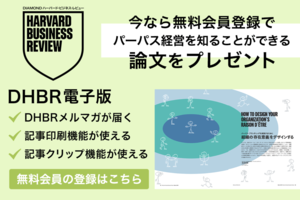
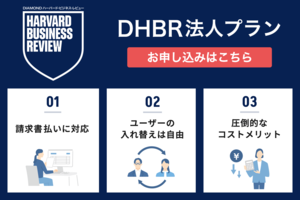
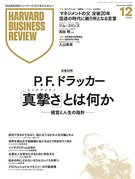
![H.ミンツバーグ経営論[増補版]](https://dhbr2.ismcdn.jp/mwimgs/8/7/135w/img_871cd4da49e5d4f957c01d18842ab79034921.jpg)
